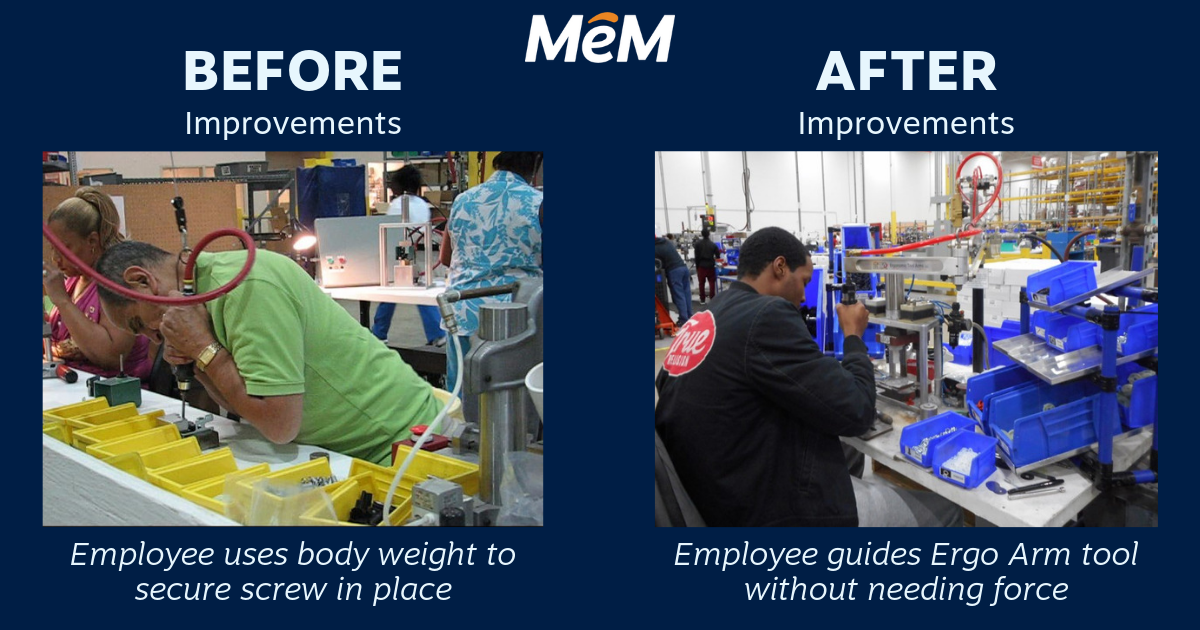E-mod is a calculation that uses past loss experience to predict future losses, and it also compares past losses to those of the average company in your industry. For Potter Electric Signal Company, LLC, an increase in annual claim costs forced their e-mod to increase, which forced their business to seek a new workers compensation insurance carrier.
Potter Electric develops and manufactures sprinkler monitoring, security, fire and industrial control products worldwide. Julie Randolph, HR Director with Potter Electric, has been in the manufacturing environment for more than 25 years with a passion for people, engineering and innovation.
“While we were feeling the pinch of high premiums due to our high claim year, Missouri Employers Mutual began working with us to add insights to making improvements,” said Julie. “Sheila Schmidt has become a part of our team when it comes to suggesting ways to make improvements in our plant.”
Reducing claims and improving e-mod
Sheila Schmitt is a seasoned Regional Manager with MEM’s Safety and Risk Services Department. Working to help Potter Electric reduce claims and improve their e-mod, Sheila made three significant suggestions:
- Take advantage of the Safety Dividend program;
- Focus on the equipment causing frequent claims; and
- Enhance ergonomics throughout plant processes.
With the help of Sheila and the dedication of the entire Potter Electric team, their e-mod has decreased to 0.89 – the first time that number has fallen below 1.0 (the average e-mod rate) since 2011.
“The team at Potter Electric get all of the credit for making the improvements necessary to manage their claim costs and frequency,” says Sheila. “They saw their e-mod climbing and had the patience to continue improving – even when it eventually came down, which can be a slow process.”
1. Safety dividends
One of the first things Sheila introduced Julie and her team to was the Safety Dividend program, which rewards policyholders for making safety improvements in their workplace. After working with Sheila to revamp certain safety policies and claims reporting procedures, Potter Electric earned a five-digit dividend.
“I can honestly say I’ve never worked with a better work comp carrier than MEM,” says Julie. “They consistently and quickly respond to our employees when there is a claim filed, as well as our requests for safety policy samples. They are eager to help and give input.”
2. Focus on equipment
Being a light assembly production facility, most assembly work completed at Potter Electric’s operation involves “driving screws,” which they found to be a lagging indicator related to injury frequency and severity.
Their plant operators use a variety of pneumatic drivers, electric drivers and battery-operated screw drivers to complete their assigned assembly task, which if done improperly, may lead to a high frequency of minor claims.
“Potter Electric continues to make changes and be innovative,” says Sheila. “From little changes, such as stacking pallets to prevent back strain from lifting, to more involved investments, such as buying improved Ergo Arms and new adjustable work stations.”

3. Ergonomic solutions to safety
“We reviewed the injury summaries provided by MEM as a part of our loss run report, and that helped us get our claims under control,” said Julie. “With our VP of Manufacturing, Production Manager, Manufacturing Engineering Manager and our Manufacturing Engineer, we all decided to focus on the assembly for safety improvements.”
Implementing and evaluating new equipment
Ultimately, Potter Electric decided to purchase an improved Ergo Arm system that required several new torque drivers with a “down assist” feature to make the greatest safety impact for their assembly line operators. The leadership at Potter Electric followed an informal but effective three-step process to ensure the installation of the new drivers had a positive return on safety.
Step One: Respond
In response to their loss run and claims experience analysis, all drivers with a torque higher than 20 pounds were modified with the new Ergo Arm and “down assist” driver, a feature specifically designed to reduce the downward force required from an assembly operator while driving screws. This minimizes the stress caused to the operator’s upper extremity during use, removing the impact of any torque and reducing vibration.

Step Two: Evaluate
After installing the new system, Potter Electric observed how their operators used them and evaluated their effectiveness in offsetting minor injuries and claims. While the Ergo Arms and new drivers reduced the physical requirement from the operator that caused previous claims, they noticed a new tendency. For example, with the new safety equipment, operators started to tighten the spring within the Ergo Arm so it would automatically retract. However, tightening the spring too much increased the exertion required to effectively use it, which led to an uptick in upper extremity strains or carpal tunnel syndrome. This was simply a training issue!
Step Three: Reassess, Retrain
To help operators safely operate the new Ergo Arms without straining or further injuring themselves, Potter Electric retrained all their operators, showed them how to relax the springs inside the arms, and encouraged everyone to be conscious of and come forward with new ideas to improve safety.
“We became much more agile, taking an iterative approach to improving work processes,” said Julie. “As a result, we significantly increased our safety and claims experience over time.”
Click to listen to our podcast around preventing injuries with workplace ergonomics.